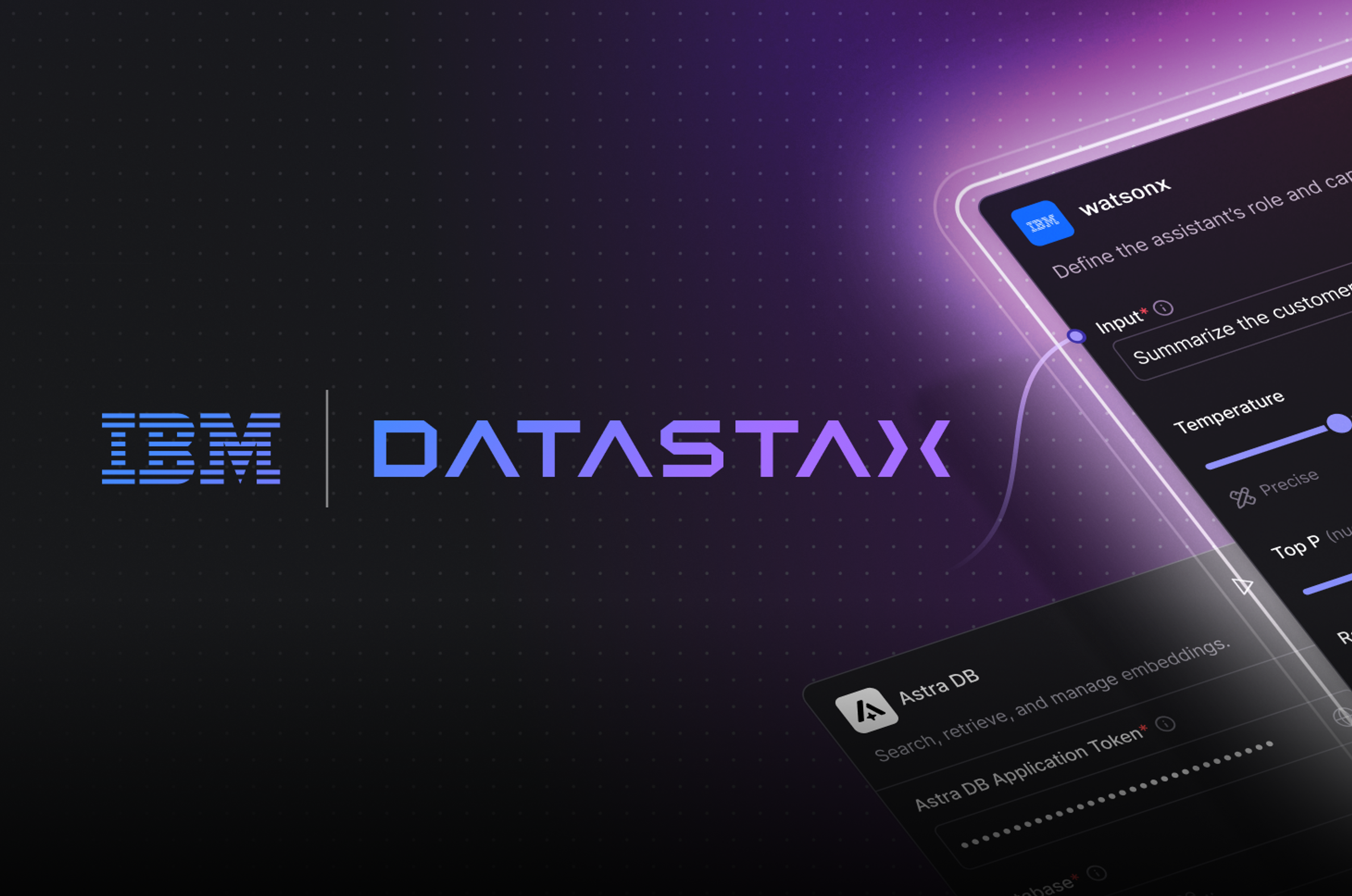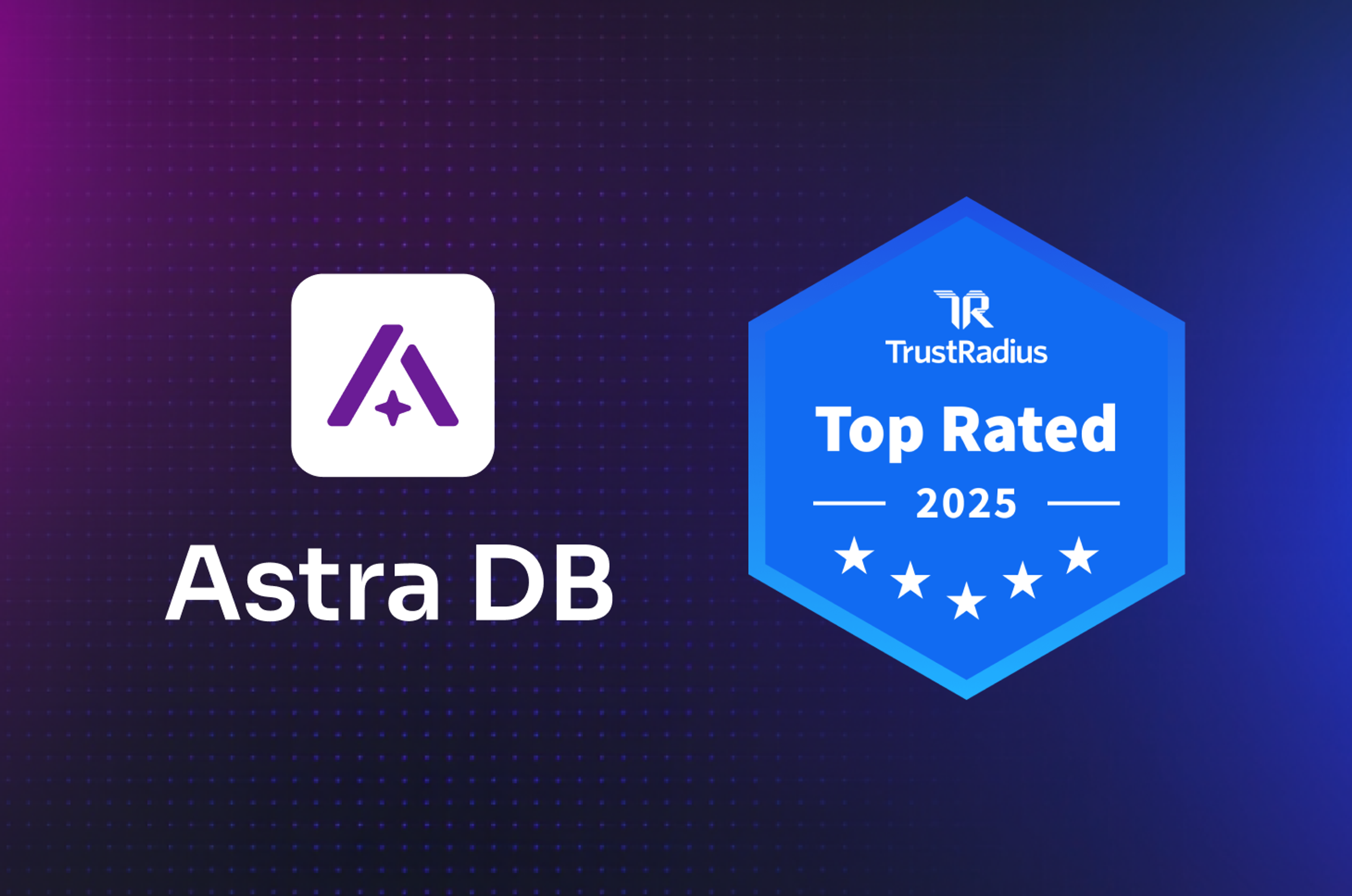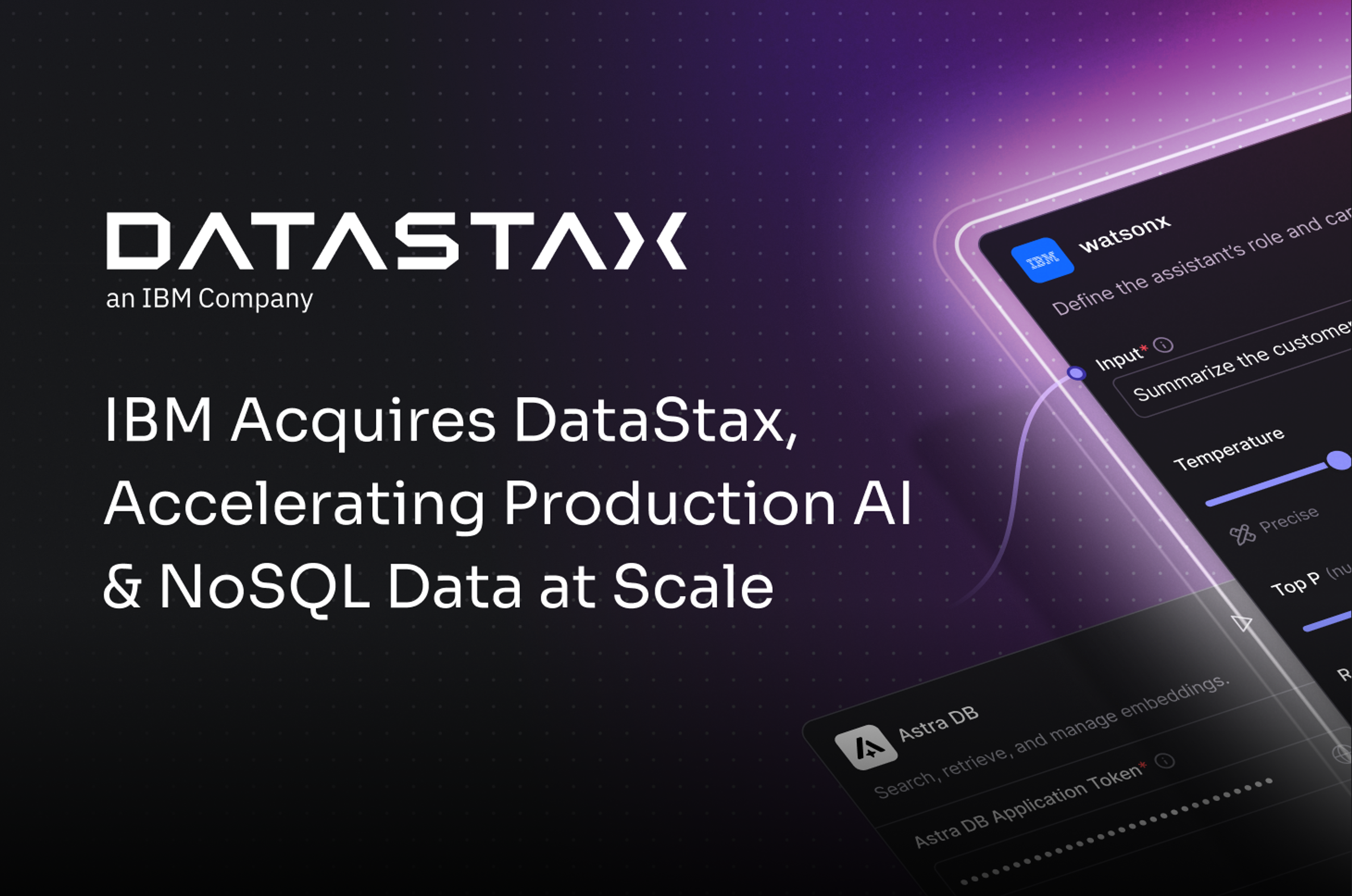As an Apache Cassandra® PMC member and long-time advocate, I’ve been part of some pretty big moments in our community—major releases, milestone adoptions, and an endless line of amazing user success stories. But today’s news might top them all: IBM plans to acquire DataStax. This marks a major moment in our journey and in the continued evolution of Cassandra. For those who might not know, IBM has a long history in the database world—it built the very first database in the early 1960s for American Airlines. Today, American Airlines relies on Cassandra for critical workloads. Full circle? I’ll let you be the judge. With IBM’s planned acquisition of DataStax, we’re entering a new chapter that promises even more innovation and investment in Cassandra’s future. Acquisitions can be unsettling, and those who know me know I like to communicate often and with as much clarity as possible. So, let’s get into it.
What does this mean for Cassandra?
First and foremost, and worth reiterating, DataStax does not own Cassandra. It’s an Apache Software Foundation project. Our core business at DataStax has been participating in this open source community and building services around Cassandra. The power of an open-source project ultimately rests on the individuals who contribute to it. Companies with a vested interest in its success employ and support those contributors, creating a virtuous cycle of continuous improvement.
IBM’s planned acquisition of DataStax signals a strategic bet on the future of Cassandra, particularly for data workloads that demand hybrid-cloud capabilities, global data distribution, and advanced AI integration. IBM’s resources, combined with the incredible momentum already happening in the Cassandra project, will open up new possibilities. The project has spent 15 years refining Cassandra’s core strengths—linear scaling, global replication, and military-grade fault tolerance. Meanwhile, we’ve steadily added usability enhancements including advanced indexing, AI features, ACID transactions, and more. That “moat” of capabilities keeps widening.
Remaining committed to customers and open source
Over the years, DataStax has been dedicated to serving customers who depend on Cassandra for mission-critical applications. That commitment remains intact. If you’ve relied on DataStax support or services, know that our team is still here to help. DataStax has been there since the beginning of the project, assisting users and ensuring success. We will continue to contribute to Cassandra, remain active in the community, and work to ensure that any transition is as seamless as possible.
DataStax has also been deeply committed to open-source principles and has a long history of investing in the open-source community, especially the Cassandra project. Over the years, we’ve watched IBM demonstrate strong leadership and stewardship in the open-source space, including its work with other great OSS companies like Red Hat. It’s great to become part of a company that is aligned with and truly understands open-source software and its significance to both developers and enterprises worldwide. With our customers and the open source community in mind, let’s look at where Cassandra is headed next.
The future of Cassandra
You might be wondering, “Where does Cassandra go from here?” Oh, the places we’ll go. If you read Cassandra Enhancement Proposals (CEPs), you’ll see these themes popping up. It’s all about turning Cassandra into the “last database you’ll ever need.” As a project, contributors are gathering around some major areas:
- Analytics: Handling huge datasets without breaking a sweat.
- Core performance: Continuing to push low-latency, high-volume workloads.
- Operations: A fully cloud-native approach that simplifies ops at any scale.
- Developer experience: Multiple APIs, powerful indexing, vector search—you name it.
These efforts are part of an ongoing mission to make Cassandra a database that serves a wide range of needs. The project aims to keep pushing Cassandra forward without sacrificing its core strengths: linear scalability, global replication, and reliability. With the enormous push for more data fueled by AI, would you want to bet on anything else?
A note of gratitude
I’m proud of the impact of DataStax in the awkward growing-up years of one of the most scalable databases in the world. It wasn’t always easy, but what an incredible community of users. We have some stories, and I can’t wait to hear more of yours. We appreciate your trust and look forward to building the future of Cassandra together. Rest assured, our commitment to the project remains as strong as ever. DataStax people will have different email addresses, but our conviction and dedication to Cassandra stay strong.
Looking ahead: Cassandra Forward
If you’re excited (or even just curious) about what’s next for Cassandra, I’d love to invite you to Cassandra Forward on March 11. It’s shaping up to be a celebration of everything Cassandra has become—and a look at where it’s headed with fresh ideas and fresh energy. Come by, ask questions, share your experiences, and meet the community. Maybe we’ll even get into the nitty-gritty of advanced indexing or AI-driven workloads. The sky’s the limit now.
Subject to close of the transaction and regulatory approval.




